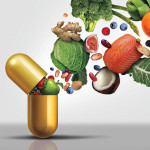A tablet version of Norvir (ritonavir) has been approved by the U.S. Food and Drug Administration (FDA), according to notices from the agency and Norvir’s manufacturer Abbott Laboratories. The film-coated tablet’s prime advantage over Norvir capsules is its heat-stable formulation that doesn’t require refrigeration. It is unclear if Norvir tablets will cause fewer side effects than Norvir capsules—in fact, it may cause a spike in gastrointestinal side effects among those switching from the capsules to the tablets. In addition, unlike the capsules, the new tablets must be taken with food.
Abbott also announced it will launch the Norvir tablet at the same wholesale acquisition (WAC) price as Norvir capsules. Additionally, the company will make Norvir tablets and capsules available through a co-pay support program for people with private insurance. Once a patient has paid $25 in co-pays, the program will cover up to $75 per month in patient co-pays within the first 12 months.
Norvir tablets, like Kaletra (lopinavir/ritonavir) tablets before them, were developed using Abbott’s Meltrex, or melt-extrusion, technology. This helped Abbott develop formulations of both drugs that can withstand heat fluctuations and don’t require refrigeration—a significant advantage, notably in parts of the world where refrigeration and climate control are not widely available.
“Approximately one-third of all HIV-positive patients in treatment use Norvir in combination with other antiretroviral medicines. The heat-stable tablet formulation may allow these patients greater flexibility to store and carry their medication with them,” said Renslow Sherer, MD, professor of medicine, section of infectious diseases and global health and director, International HIV Training Center, University of Chicago Hospitals. “For patients who may not have access to refrigeration, this new formulation is also important.”
Each Norvir tablet contains 100 mg of ritonavir, similar to each Norvir capsule. However, the drug in the tablet formulation is absorbed differently, hence it must be taken with food—the clinic trials included meals consisting of about 850 calories and a mix of protein, fat and carbohydrates. Even with food, the maximum amount (Cmax) of ritonavir in the bloodstream is 26 percent higher when using tablets compared with the capsules.
Because of the increased Cmax, the FDA warns that people switching from the capsules to the tablets may experience more gastrointestinal side effects, such as nausea, vomiting, abdominal pain or diarrhea. However, this is based on data involving those using the full dose of Norvir (600 mg twice daily). Norvir is most often used at much lower doses to boost the blood levels and effectiveness of other protease inhibitors. It is unclear whether people switching booster doses of Norvir capsules for Norvir tablets are likely to experience more gastrointestinal side effects.
Though the FDA did not require that Norvir capsules be taken with food, it did recommend doing so to reduce the risk and severity of gastrointestinal side effects.
As with Norvir capsules, the tablet formulation is expected to interact with many other medications used to treat HIV, HIV-related complications and other diseases.
The Norvir co-pay support program will be available through Norvir.com. Abbott is also committed to continuing its patient assistance program to make sure any patient without prescription coverage can get both Kaletra and Norvir for free. To learn more about Abbott’s patient assistance programs, click here.






2 Comments
2 Comments